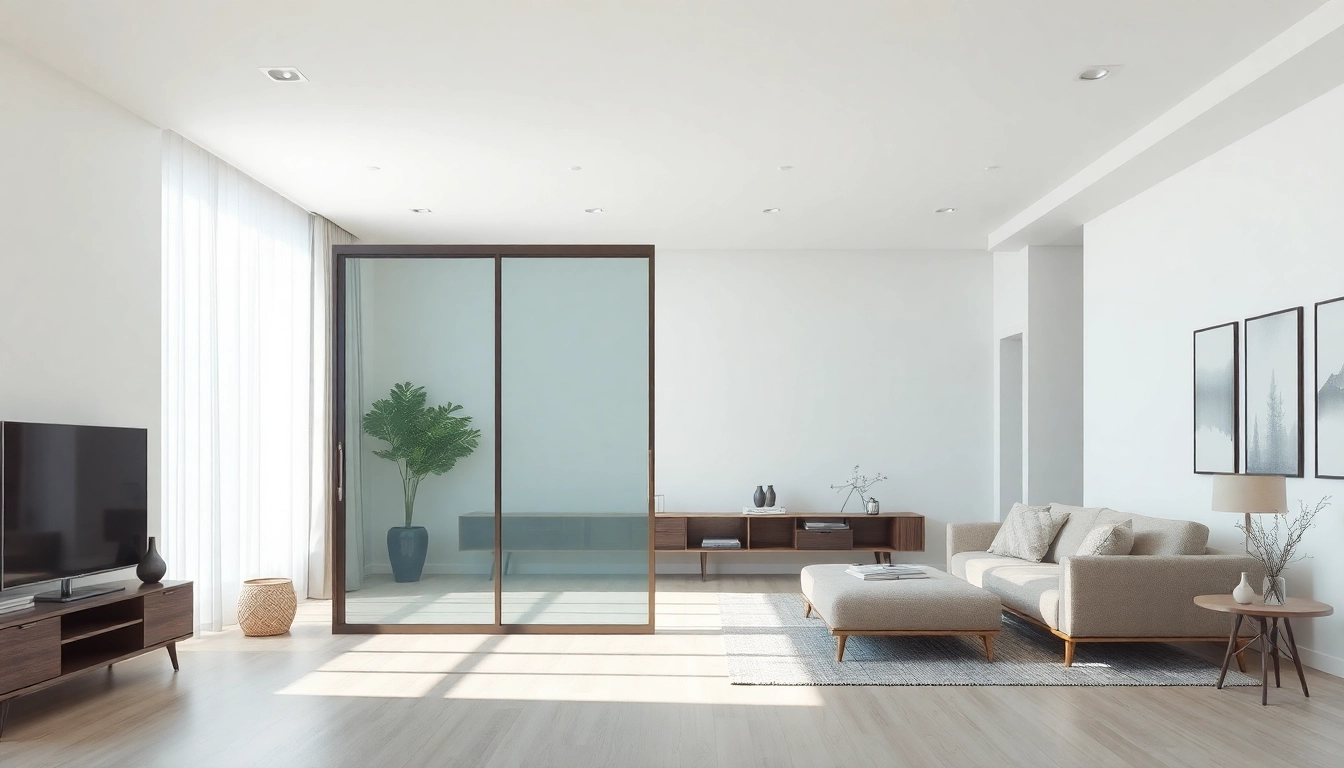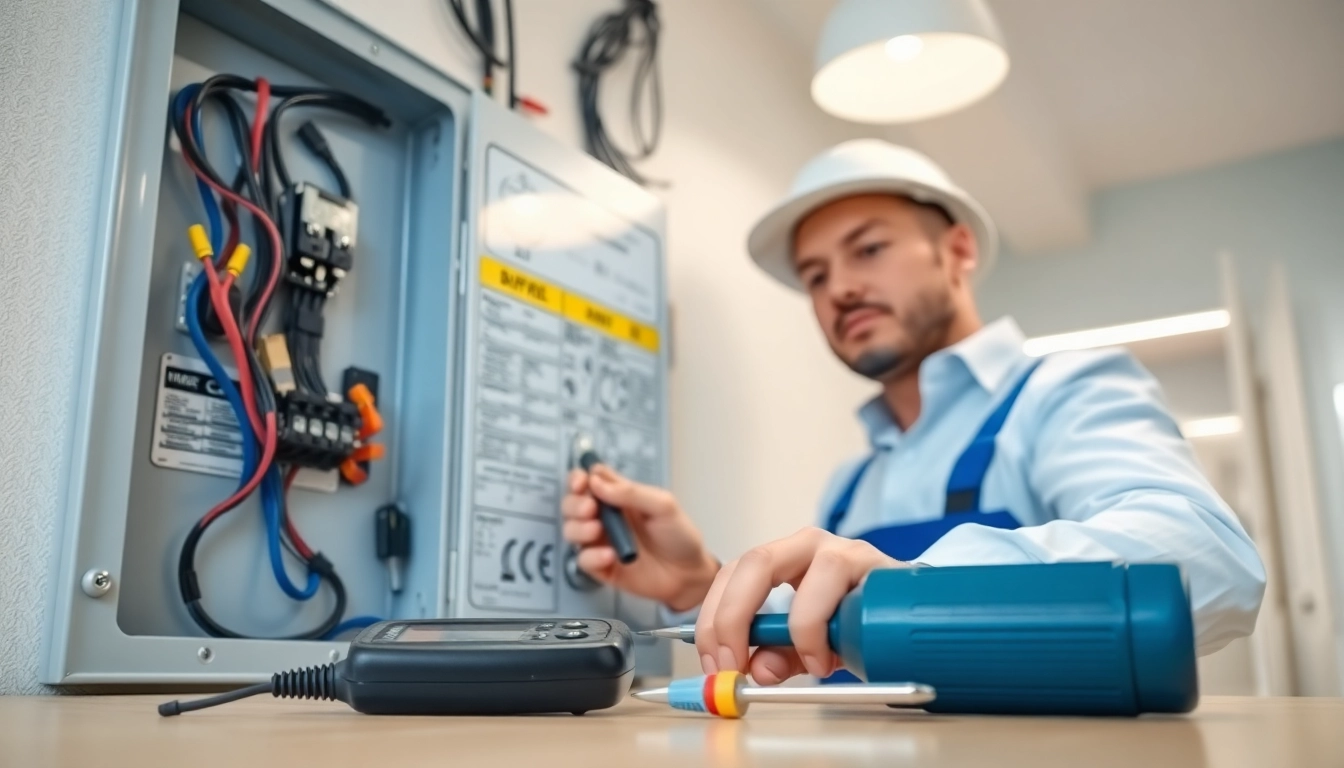Introduction to Sliding Partition Walls
Sliding partition walls are increasingly becoming a popular choice for space management in both residential and commercial environments. These versatile structures allow for the seamless division of areas without the permanence of traditional walls. The adaptability and aesthetic appeal make sliding partition walls a practical solution for maximizing function in various spaces.
What is a Sliding Partition Wall?
A sliding partition wall is a movable wall system that allows for the division of larger spaces into smaller, more functional areas. Unlike traditional walls that require extensive construction, sliding partitions can be installed with minimal disruption. They come in various styles, materials, and configurations to suit different design aesthetics and functional needs. The panels glide along a track system, which can be either mounted to the ceiling or the wall, enabling easy access and flexibility.
Benefits of Using Sliding Partition Walls
The benefits of sliding partition walls extend beyond aesthetics. Here are some key advantages:
- Space Optimization: They allow for greater control over space usage, making it easy to create private areas when needed and open spaces for larger gatherings.
- Cost-Effectiveness: Sliding partition walls are often more affordable than traditional construction methods, reducing labor and material costs.
- Flexibility: Users can easily reconfigure spaces, which is ideal for evolving needs in workplaces, schools, and homes.
- Acoustic Solutions: Many sliding walls come with soundproofing options, providing privacy and noise control.
- Design Versatility: Available in various materials like wood, glass, and fabric, these partitions can be customized to fit any décor.
Popular Applications in Residential and Commercial Spaces
Sliding partition walls have a range of applications:
- Residential Living Spaces: Homeowners can utilize these partitions to divide living rooms, bedrooms, and home offices, allowing for multifunctional use.
- Commercial Offices: Businesses frequently use sliding partitions to create flexible workspaces that can be adapted for meetings, conferences, or collaborative projects.
- Educational Institutions: Schools utilize sliding partitions to create adaptable classrooms that can transform based on class size or teaching style.
- Hospitality Venues: Restaurants and event spaces can use sliding walls to adjust capacity according to the event’s needs, enhancing the guest experience.
Choosing the Right Sliding Partition Wall
Choosing the appropriate sliding partition wall involves evaluating various factors, including the space’s purpose, design preferences, and budget. Here’s how to navigate these considerations effectively:
Materials and Design Options
Sliding partition walls come in a variety of materials, each offering unique benefits:
- Wood: Provides a warm, classic look and is customizable with finishes and stains.
- Glass: Ideal for modern spaces, glass partitions create an open feel while providing soundproofing options.
- Fabric: Lightweight and versatile, fabric walls can add color and texture, suitable for both home and office settings.
Design choices also vary from simple panels to intricate patterns and textures. When selecting a design, consider the overall aesthetic of your space, potential maintenance needs, and acoustic considerations.
Cost Considerations and Budgeting Tips
The cost of sliding partition walls can vary significantly based on materials, design complexity, and installation requirements. Here are a few budgeting tips:
- Define your needs clearly before shopping, which will help you focus on options that provide the best value for your investment.
- Get multiple quotes from suppliers and installers to compare pricing and options.
- Consider the long-term savings of investing in high-quality materials that require less maintenance over time.
- Look for sales or seasonal discounts from manufacturers or local suppliers.
Comparing Sliding Partition Walls to Traditional Options
When deciding between sliding walls and traditional construction methods, several factors come into play:
- Installation Time: Sliding partition walls can be installed much quicker than traditional walls, resulting in less disruption to your environment.
- Flexibility: Unlike traditional walls, which are permanent structures, sliding walls can be relocated or reconfigured as needs change.
- Cost Efficiency: The installation and material costs of sliding walls are typically lower than that of standard drywall or masonry options.
- Aesthetic Appeal: Sliding walls offer a modern look that can enhance the design of both residences and businesses.
Installation of Sliding Partition Walls
Installing sliding partition walls can be a straightforward project, although it may require some technical skills depending on the wall type chosen. Understanding the installation process is crucial for achieving the best results.
DIY vs. Professional Installation
Deciding whether to install your sliding partition walls or hire a professional depends on your skill level and the complexity of the design:
- DIY Installation: Many systems come with detailed instructions, making them accessible for a competent DIY enthusiast. It’s essential to assess your tools and skills to ensure a successful installation.
- Professional Installation: Hiring professionals may be beneficial for complex systems or if you lack experience in construction. Professionals can ensure the walls are installed correctly, maximizing performance and aesthetics.
Essential Tools and Preparation Steps
If you’re considering a DIY installation, here are the essential tools and steps involved:
- Tools: A level, drill, screwdriver, measuring tape, stud finder, and safety goggles are needed for an effective installation.
- Preparation Steps:
- Measure the area where the partition will be installed, ensuring you account for necessary clearances.
- Gather all tools and materials before starting to create an efficient workflow.
- Review the manufacturer’s installation guidelines thoroughly to understand the specific requirements for your sliding wall system.
Common Challenges and Solutions
Like any installation project, working with sliding partition walls may present challenges. Here are common issues and their solutions:
- Alignment Issues: Ensuring panels are aligned properly is critical for functionality. Use a level during installation and make adjustments as needed.
- Track Installation: If floor tracks are part of the design, ensure they are placed on a flat surface to prevent rolling issues.
- Noisy Operation: Lubricating tracks and using high-quality materials can reduce friction and ensure smooth operation.
Maintenance and Care for Sliding Partition Walls
Sliding partition walls require regular maintenance to keep them in optimal condition. Here’s how to ensure longevity and effective operation:
Routine Maintenance Tips for Longevity
To extend the life of your sliding partition walls, consider incorporating these maintenance practices:
- Regularly clean the tracks and wheels to prevent debris buildup, which can impede movement.
- Inspect the panels for any physical damage and repair scratches or chips promptly to prevent further deterioration.
- Reapply lubrication to the tracks as needed, particularly for frequently used partitions, to maintain smooth and effortless operation.
Repairing and Upgrading Sliding Walls
In cases of damage or wear, timely repairs are crucial. Depending on the type of material used, you can:
- Wood Panels: Sand and refinish wood surfaces to restore their appearance.
- Glass Panels: Replace any cracked or damaged glass panels to ensure safety and integrity.
- Track Systems: If the track becomes misaligned, adjust or replace it as necessary for smooth operation.
Sustainability Factors and Eco-Friendly Choices
As sustainability becomes a priority in construction and design, consider eco-friendly options for your sliding partition walls:
- Select materials with low environmental impact, such as FSC-certified wood or recycled materials.
- Choose energy-efficient glass options that provide insulation, reducing energy consumption in buildings.
- Consider systems that promote the reuse of materials and allow for easy disassembly, contributing to sustainable building practices.
Case Studies and Success Stories
Real-world examples highlight the versatility and functionality of sliding partition walls. Here are a few noteworthy case studies:
Transforming Spaces: Residential Examples
In residential applications, homeowners have successfully integrated sliding partitions to create versatile living areas. For example, a New York apartment featured a custom wood sliding wall that transforms the living room into a guest bedroom while maintaining minimal space disturbance. This innovative use of space highlighted both functionality and aesthetics, resulting in positive user experiences.
Commercial Applications and User Experiences
Commercial spaces like coworking environments have increasingly adopted sliding partitions. One notable case is a California tech startup that implemented sliding glass walls to facilitate flexible meeting spaces. This design not only improved collaboration among teams but also allowed for the easy transformation of office layouts as company needs evolved.
Innovative Design Ideas from Industry Experts
Industry experts have embraced sliding partitions as a solution for innovative design. For instance, renowned architect Jane Doe has incorporated sliding panels in her projects to blur the lines between indoor and outdoor spaces, paving the way for a seamless connection with nature while maintaining structural integrity.
Conclusion
Sliding partition walls represent a progressive approach to space management, offering versatility, cost savings, and design flexibility. Whether for residential or commercial purposes, these innovative solutions can transform environments to meet evolving needs. Selecting the right materials, understanding installation processes, and maintaining the systems will ensure optimal performance and satisfaction.

